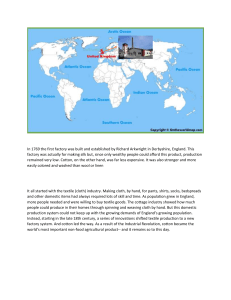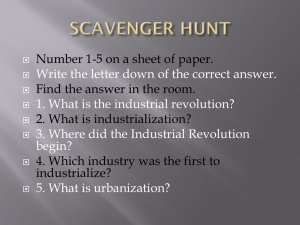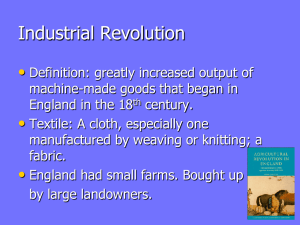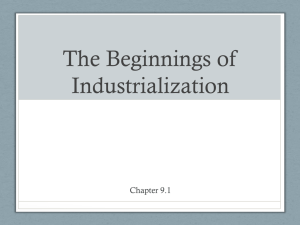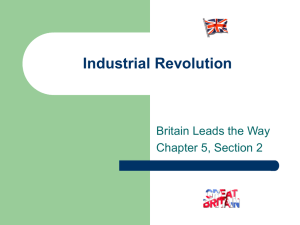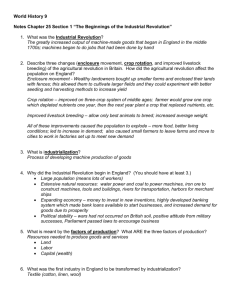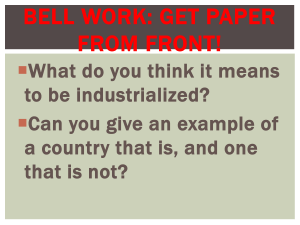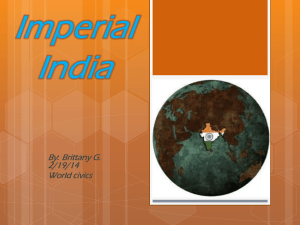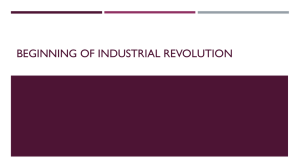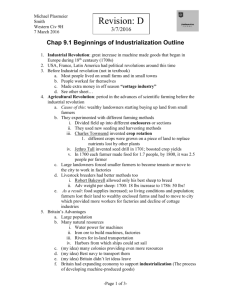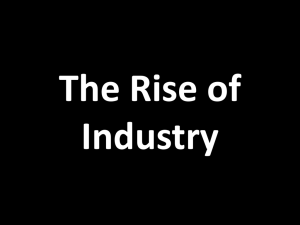Document
advertisement
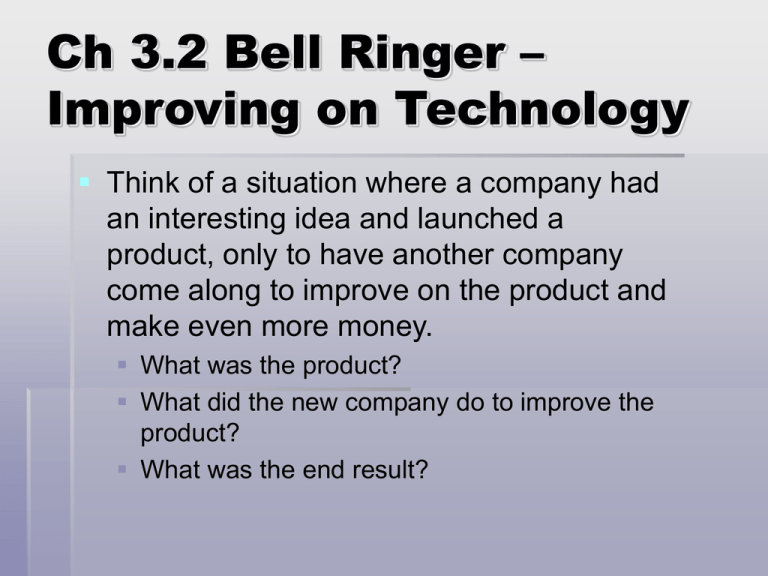
Ch 3.2 Bell Ringer – Improving on Technology Think of a situation where a company had an interesting idea and launched a product, only to have another company come along to improve on the product and make even more money. What was the product? What did the new company do to improve the product? What was the end result? 2 Agenda – 3.2 Britain Leads the Way Britain was the starting point for the Industrial Revolution Changes transformed the textile industry New technologies were part of the revolution in transportation Great Britain’s Advantages Natural Resources Waterpower - Coal - Iron ore All found in large supplies in GB Skilled work force Had skilled mechanics who were eager to meet the growing demand for new, practical inventions Geography Excellent harbors - over 6,000 merchant ships Provided access to resources and markets Favorable climate for new ideas Great interest in science and technology New ideas were encouraged and rewarded People invested in new technologies Great Britain’s Advantages Banking system Loaned $ to businesses at good rates Encouraged: Investments in startups/expansion of operations Technology investments – new/better machines Prosperous economy The business class had capital, or wealth, to invest, Consumer goods were affordable to all Political stability No wars fought on British soil Govt. favored economic growth Business people influenced Parliament Laws encouraged business and investment British Cotton Trade About 1850 2 •1600s - cotton cloth from India became popular •British merchants organized a cotton cloth industry • The putting out system was developed: • Work was done by subcontractors • Work was completed in their own facilities • Usually their own homes. Changes in the Textile Industry 2 As the demand for cloth grew, inventors came up with a series of remarkable inventions that revolutionized the British textile industry. The flying shuttle allowed weavers to work much faster. The spinning jenny spun many threads at the same time. The waterframe used water power to speed up spinning still further. The new machines were too large and expensive to be operated at home. The putting out system was replaced by the first factories Factories - places that brought together workers and machines to produce large quantities of goods. Revolution in Transportation 2 As production increased, entrepreneurs needed faster and cheaper methods of moving goods from place to place. Turnpikes, or toll roads, Canals, Stronger bridges Upgraded harbors All helped to improve transportation. The invention of the steam locomotive made possible the growth of railroads. Robert Fulton used the steam engine to power the first steamboat. Travel Times to London 2 •How many miles would you want to walk in a day? •How many days would it take for you to walk the distances above? •By 1850, how many additional trips could you make? End Video
